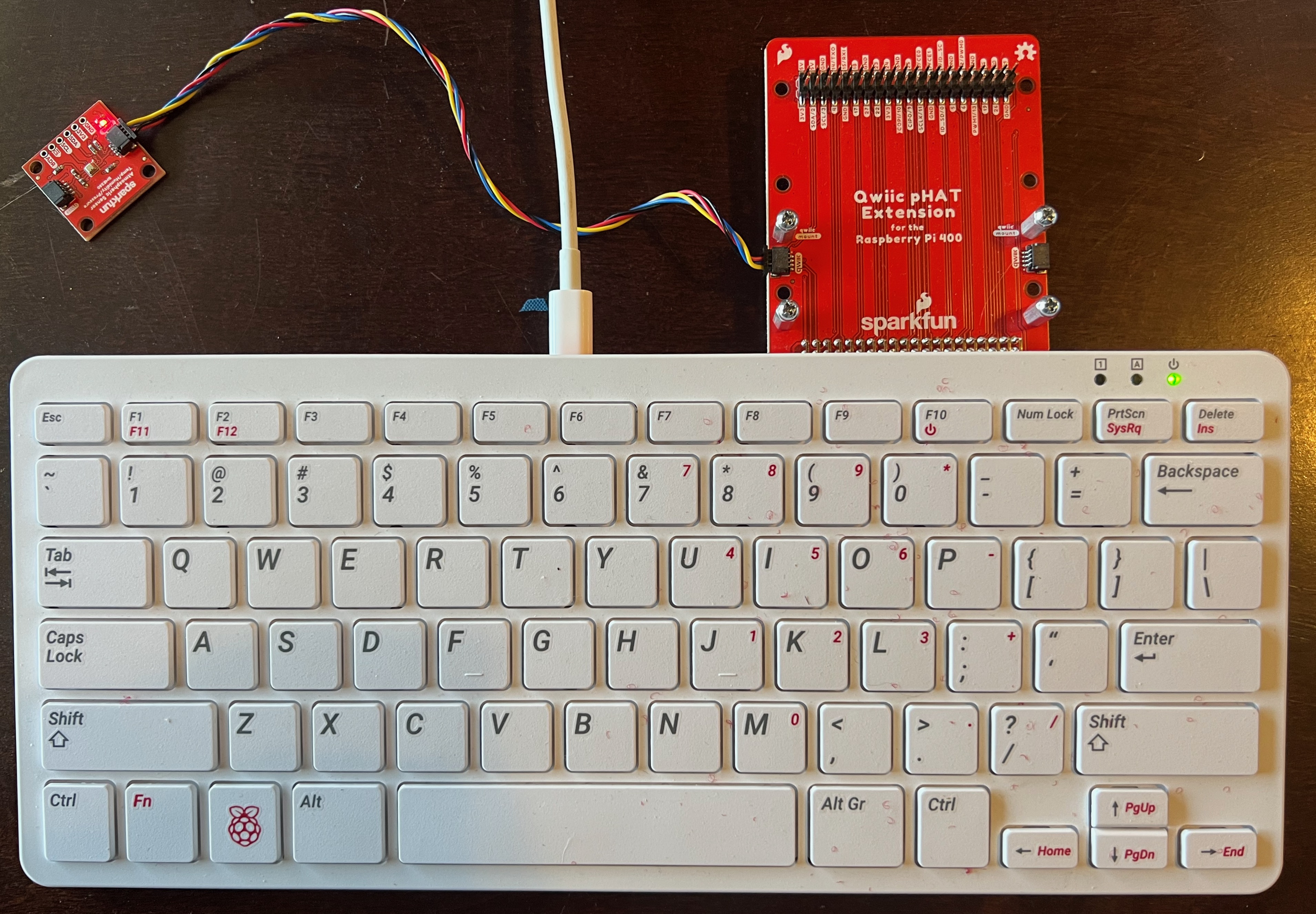Atmospheric sensing#
In this lesson we’ll collect temperature, humidity, and air pressure data from a sensor and present it in a Python terminal.
Parts list#
For this exercise you’ll need:
Raspberry Pi 400 computer
Sparkfun Qwiic pHAT Extension
Sparkfun BME280 Atmospheric Sensor
Sparkfun Qwiic cable (500mm)
Wire pHAT and sensor#
Your set-up might look slightly different than this. This image shows only the BME280 atomospheric sensor attached to the pHAT.

Write a Python 3 program#
To use the following code, open a command terminal. Then enter the following command:
source ~/code/4cscc-ln/venv/bin/activate
Then, enter the following command to start an ipython terminal:
ipython
Finally, copy paste the following code into the ipython terminal. This will collect temperature, air pressure, and relative humidity readings from your BME280 sensor every 2 seconds and display them on the screen. It will run until you press “Control-c” (i.e., press the “control” and “c” keys at the same time).
from time import sleep
import qwiic_bme280
tph_sensor = qwiic_bme280.QwiicBme280()
if not tph_sensor.begin():
print('BME 280 Atmospheric sensor doesn\'t seem to be connected to the system.')
exit(-1)
else:
# discard first readings from the sensor as they tend to be unreliable
_ = tph_sensor.temperature_fahrenheit
_ = tph_sensor.pressure
_ = tph_sensor.humidity
while True:
t = tph_sensor.temperature_fahrenheit
p_pascal = tph_sensor.pressure
p_atm = p_pascal / 101325 # conversion Pascals to atmospheres
h = tph_sensor.humidity
print('Temperature (F): %1.2f' % t)
print('Pressure (atm): %1.2f' % p_atm)
print('Humidity (%%): %1.2f' % h)
print('-')
sleep(2) # pause for 2 seconds before collecting the next reading
